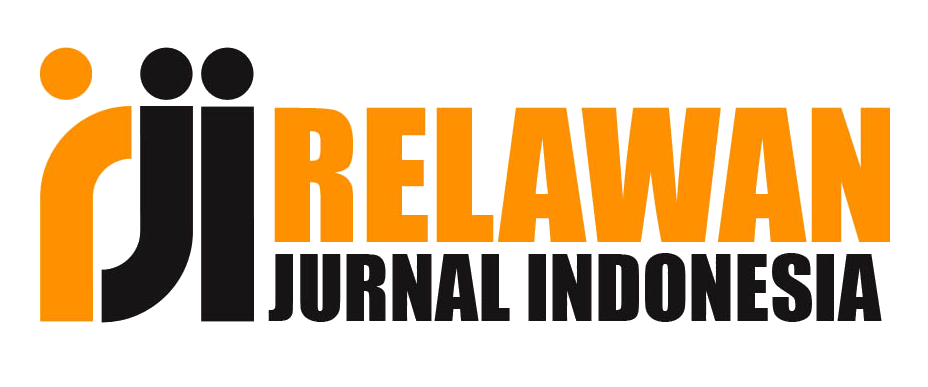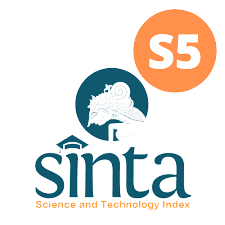Author Guidelines
The author must send the manuscript online by first registering as an author to the website
http://ejurnal.unisri.ac.id/index.php/sin/user/register
for every submitted article, the author is obliged to follow the terms and conditions in accordance with the Style Guide of Jurnal Sinektik
Instructions For Author of Jurnal Sinektik
AUTHOR GUIDELINE
- The manuscript submitted must be original and has never been published elsewhere.
- The manuscript is written in Bahasa Indonesia or English using Microsoft Word
- The Body of the manuscript should be written in paper size A4, 1 space, double column, font type Times New Roman, font size 12pt, and margin 2 cm.
- Use JPP template for preparing your manuscript (download)
- The manuscript must be in *.doc or *.rtf, and sent to the journal system via online submission by creating an account in this Open Journal System (OJS) [click REGISTER if you have not had any account yet, or click LOG IN if you have already had an account]
GENERAL GUIDELINES
- Article for JPP covers all research in the field of education. the manuscript must be written in Times New Roman, font size 12 points, 1 space, double column, and paper size A4. Length of the manuscript must be 5-12 pages and written using Microsoft Word in *.doc or *.rft format.
- Authors name (personal or team), listed with no academic degree with institution address and placed under the title of the article. For a manuscript written by a team, the editor only communicates with the corresponding author. E-mail addresses and phone numbers of the corresponding author should be included for easy communication.
- Articles must be written in Bahasa Indonesia or English with the following requirement: Title, written briefly and effectively, font size 14 points, maximum 12 words for Indonesian language articles; 10 words for the English article, and capitalize each word except conjunction; Abstract, written in English and Bahasa Indonesia (maximum 200 words), containing the objectives, methods, research results; Keywords, words or terms that reflect the article content and informative (3-5 words), are written underneath the abstract with one-line spacing and bold-tilted; Introduction (without subtitles) containing backgrounds, literature reviews, and research objectives; Method should be accompanied by references, relevant modification should be explained; Results and Discussion, this part should be presented in the same part, clearly and briefly. Discussion part should contain the benefit of research result, not repeat result part.; Conclusion, presented clearly; and Reference should use minimum 80% of primary referral sources (international journal) of the last 10 years of publications and written in APA IV style. Unpublished reference is not suggested to be cited.
- Referrals and quotations using confined referral techniques (last name, year), eg: (Miller, 1993). The direct quotation is accompanied by a description of the page number from which the quotation originates, for example: (Miller 1993: 47) and typed one spacing jutted right 5 taps, left and right flat.
- Tables and pictures presented follow the certain Scientific Writing Guidelines (eg, Lampung University, 2008) or directly modeled on the manner in which the articles have been published. The Indonesian article uses Enhanced General Guidelines (Depdikbud, 1987). Articles in English use a variety of standards.
- All manuscripts are reviewed by anonymous reviewers appointed by the editor based on their research interest or field of expertise. The authors are given a chance to make improvements (revision) of the manuscript as suggested by a reviewer or editor. Acceptance or rejection of the manuscript will be notified by a letter.
- Widya Wacana: Jurnal Ilmiah does not require authors to pay an Article Processing and Submission Charges. However, authors who want to order a printed version of the article should pay the printing fee of 150.000 IDR (one hundred and fifty thousand rupiahs). In return, the author receives a copy of the article.
- The list of references is arranged in the manner of the following examples and sorted alphabetically and chronologically.
Book:
Beverley, B. 1993. Children’s Science, Constructivism and Learning in Science (Second Edition). Victoria: Deakin University Press.
Saukah, A. & Waseno, M.G. (Eds.). 2002. Menulis Artikel untuk Jurnal Ilmiah (Edisi ke-4, cetakan ke-1). Malang: UM Press.
Article in the Book:
Kozma, R.B. & Russell, J. 2007. Students becoming chemists: Developing representational competence. Dalam J. Gilbert (Eds.), Visualization in science education. Netherlands: Springer.
Article:
Miller, S. 1993. Children’s Alternative Frameworks: Should be Directly Addresses in Science Instruction? Journal of Research in Science Teaching, 30 (3): 233-248.
Official Document:
Pusat Pembinaan dan Pengembangan Bahasa. 1978. Pedoman Penulisan Laporan Penelitian. Jakarta: Depdikbud.
Undang-undang Republik Indonesia Nomor 2 tentang Sistem Pendidikan Nasional. 1990. Jakarta: PT Armas Duta Jaya.
Thesis, Dissertation, Research Reports:
Tarmini, W. 2008. Kata Tanya dalam Konstruksi Interogatif Bahasa Indonesia: Kajian Sintaktis dan Semantis. Disertasi tidak diterbitkan. Bandung: PPS Unpad.
Proceeding:
Rahman, B. 2010. Manajemen Mutu Akademik Lembaga Pendidikan Tenaga Kependidikan untuk Meningkatkan Produktivitas Kelembagaan. Makalah disajikan dalam Seminar Nasional Revitalisasi LPTK untuk Menghasilkan Guru Profesional, Universitas Lampung, Bandar Lampung, 9 Juni.
Internet:
Cole, P. 2005. How Irregular is WH in Situ in Indonesian. (Online), (http://www.ling.udel.edu/pcole/How_Irregular html), diakses 18 Mei 2005.
Articles submitted to Jurnal Sinektik will be reviewed by two independent reviewers from our Editorial Advisory Board (double-blind peer review) according to research interest and scientific field of reviewers. Article evaluation process will be taken approximately three months and the acceptance or rejection decision will be delivered to authors via email. The articles must not be published elsewhere.













